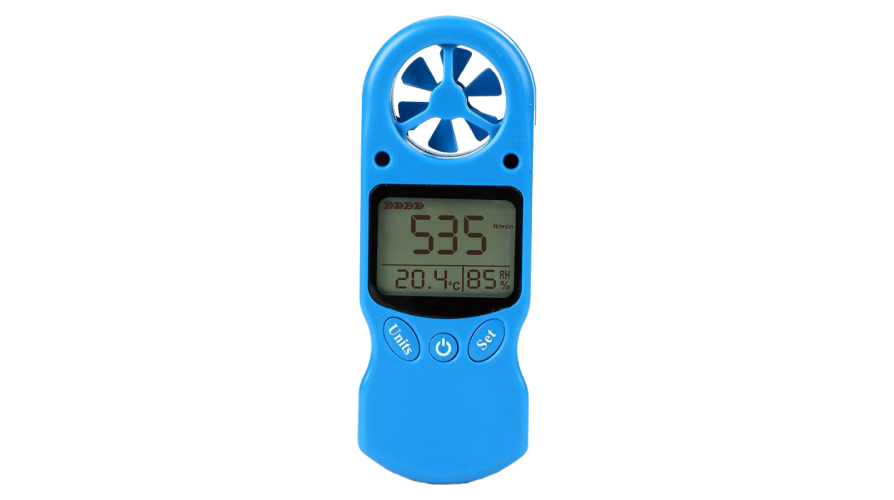How an Anemometer Can Enhance Your Weather Surveillance System
Anemometers Introduced: Comprehending Their Significance in Ecological Surveillance and Precaution
The function of anemometers in ecological tracking and safety and security steps is commonly taken too lightly, yet their relevance is indisputable. These instruments have a long background rooted in scientific questions and technological innovations, evolving to become necessary tools in different areas. From meteorology to aviation security, anemometers play a vital function in providing exact information that educates decision-making processes and boosts total safety. Recognizing the ins and outs of anemometers unveils a world of crucial understandings that are fundamental to our understanding of the atmosphere and the steps we require to make certain safety and security.
Background of Anemometers
The evolution of anemometers can be traced back to the old civilizations where rudimentary wind gauging gadgets were very first used. One of the earliest known anemometers was the hemispherical mug anemometer developed by Leon Battista Alberti in the 15th century.
Over the years, improvements in modern technology led to the development of even more modern-day anemometers, consisting of ultrasonic anemometers and laser Doppler anemometers, using boosted accuracy and performance in measuring wind rate and instructions. The history of anemometers showcases an amazing journey of innovation and progression in the field of meteorology.
Kinds of Anemometers
Throughout the area of meteorology, numerous types of anemometers have been established to precisely determine wind rate and direction. The most common type is the cup anemometer, which includes 3 or four mugs installed on straight arms that rotate with the wind. As the cups spin, the rate at which they rotate is straight symmetrical to the wind rate. Another commonly utilized kind is the vane anemometer, which includes a tail or fin that straightens itself with the wind instructions. This positioning enables the gadget to identify the wind direction. Sonic anemometers utilize ultrasonic signals to measure wind speed and instructions precisely. They are generally utilized in study applications due to their high accuracy. Hot-wire anemometers run based on the concept that the cooling effect of wind on a warmed cord is symmetrical to the wind rate. These anemometers appropriate for gauging reduced wind speeds with high precision. Each type of anemometer has its toughness and is picked based on the details demands of the surveillance job available.
Applications in Weather Forecasting
Having talked about the numerous sorts of anemometers made use of in weather forecasting for gauging wind rate and direction, it is important to discover their functional applications in the field. Anemometers play a vital function in weather forecasting by giving exact and real-time data on wind problems (anemometer). Meteorologists make use of anemometers to keep an eye on wind speed and direction to anticipate climate patterns, issue warnings for extreme weather condition events like cyclones, hurricanes, and tornados, and examine weather for aviation security
In meteorology, anemometers aid in recognizing regional and regional wind patterns, which are vital for predicting weather changes and establishing climatic patterns. These tools are additionally used in research to research microclimates, urban heat islands, and air contamination diffusion. Additionally, anemometers are used in farming to enhance plant administration techniques, such as irrigation and chemical application, based upon wind problems.
Relevance in Aeronautics Security
An indispensable facet of guaranteeing aviation security exists in the careful surveillance of wind conditions utilizing anemometers. Anemometers play an important duty in aeronautics by giving real-time information on wind rate and instructions, aiding pilots in making notified company website choices during flight, liftoff, and touchdown. Uncertain and strong winds can dramatically impact aircraft operations, making it essential for aviation authorities to rely upon exact wind dimensions to make sure the security of passengers and crew.

In the vibrant atmosphere of aeronautics, where also minor modifications in wind speed and direction can have extensive impacts, anemometers stand as essential devices for advertising safe and safe flight.
Duty in Environmental Research Study
Just how do anemometers add to developments in ecological research study? Anemometers play a vital duty in ecological research by giving important data on wind speed and instructions. This details is important for recognizing different atmospheric processes, such as air pollution diffusion, weather condition patterns, and climate change. By accurately gauging wind features, anemometers aid researchers assess the movement of toxins in the air, analyze the impact of industrial emissions, and anticipate the spread of impurities in the environment.


Conclusion
In final thought, anemometers have actually played an important function in ecological surveillance and security measures. Understanding the relevance of anemometers is important for accurately gauging wind speed and instructions, which is essential for forecasting weather condition patterns, making sure safe air travel procedures, and performing environmental research studies.
One of the earliest recognized anemometers was the hemispherical cup anemometer created by Leon Battista Alberti in the 15th century. Over the years, advancements in technology led to the advancement of more modern anemometers, consisting of ultrasonic anemometers and laser Doppler anemometers, supplying enhanced precision and effectiveness in determining wind speed and direction. Hot-wire anemometers run based on the concept that the cooling impact of wind on a heated cord is symmetrical to the wind rate. Meteorologists make use of anemometers to keep an eye on wind rate and instructions to forecast weather condition patterns, problem warnings for extreme climate occasions like storms, hurricanes, and cyclones, and examine climatic conditions for aeronautics safety.
Understanding the value of anemometers is crucial for precisely gauging wind speed and instructions, which is important for predicting weather condition patterns, guaranteeing safe aviation operations, and performing environmental her explanation research studies. (anemometer)